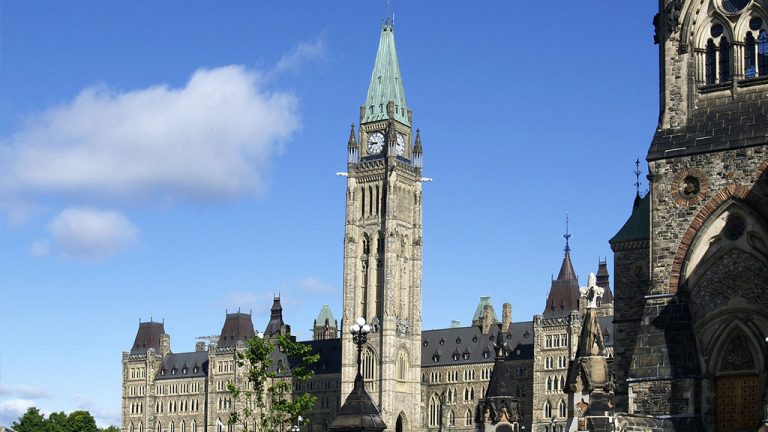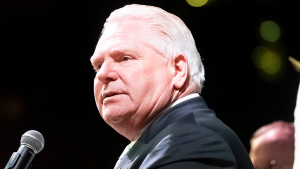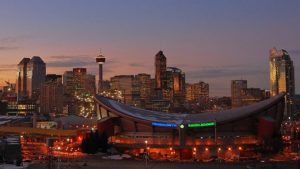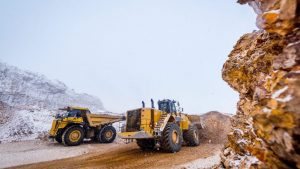For generations, visitors to New York City have headed to Times Square, the Empire State Building and the Statue of Liberty. But ever since Sept. 11, 2001, another landmark has been on the must-see list: the site where 2,792 people died in the attacks on the World Trade Center.
Construction crews shoring up old foundation for new skyscraper
NEW YORK
For generations, visitors to New York City have headed to Times Square, the Empire State Building and the Statue of Liberty. But ever since Sept. 11, 2001, another landmark has been on the must-see list: the site where 2,792 people died in the attacks on the World Trade Center.
Like it or not—and many native New Yorkers don’t— ground zero pilgrimages have become a regular part of New York City tourism. Even though there’s very little to actually see at the site, at any given time dozens of people from around the world can be found peering from a viewing wall into the gaping hole at the heart of the tragedy. Just as the twin towers were a New York landmark, so are their ghosts.
Some visitors take pictures or shoot videos. Others read panels depicting the history of the site and the events of Sept. 11. Some just stare.
“We wanted to see everything there is to see in New York—Yankee Stadium, the Statue of Liberty. Ground zero is now part of that,” said Dan Leonard, 56, of Turkey Run, Ind., on vacation with his wife and children.
“If you’ve seen it before and know how incredibly large it was, you can’t possibly imagine it not being there,” said Cindy T. Francis, 51, of Apex, N.C., who visited ground zero while attending a teachers conference.
Inside the four-metre high wall, which consists of a series of galvanized mesh panels that people can look through, crews work to remove ruins of a parking garage and to shore up the 21-metre-deep foundation for a new skyscraper.
The Freedom Tower will be 541 metres—the tallest building in the world. When it is ready in 2009, the twisting glass and steel tower, topped by an 84-metre spire designed to evoke the Statue of Liberty, will include 60 storeys of office space, 10 storeys of retail space, an observation deck and energy-generating windmills.
Twisted steel beams and a wall that is the only surviving remnant of the original complex will be preserved in an underground interpretive centre.
Construction is also planned for a permanent memorial that will transform the twin towers’ footprints into reflecting pools of water. The memorial, called Reflecting Absence, will place the names of all the Sept. 11 victims randomly around the pools. The memorial also will pay tribute to the six victims of the 1993 bombing of the trade centre.
For those who saw the attacks on television, a visit puts things in perspective. Many people think only the twin towers were destroyed; in reality, seven buildings were.
“Once you see it in person you get a much better idea of how big this attack was,” said Cristyne Nicholas, president of NYC & Company, the city’s tourism bureau.
None of the companies that offer tours of downtown Manhattan, either by bus or on foot, specifically mention ground zero. That would be distasteful, Nicholas said.
But, she added, “it’s part of the healing process for people to see where the tragedy took place and absorb it.
“It would be an even greater tragedy if the firefighters and the New Yorkers who were lost that day were forgotten.”
Artist Andy Jurinko, who has lived near the Trade Center site for 27 years, is used to the tourists. But their presence irks him.
Before Sept. 11, he said, they wanted to eat out and shop. Now, “they want to see the train wreck, they want to touch the horror.
“Standing right outside my office here, they come stand by the wall and have their picture taken. It’s like Disneyland,” he said.
He looks forward to the day when people have a proper memorial to visit. “They say they want to pay respect, but sometimes paying respect is staying the hell away,” he said.
Demand from visitors to see the site was so strong during the six-month cleanup after the attacks that the city built special viewing platforms and issued over a million passes to them. The platforms are closed now that visitors can walk around most of the perimeter.
City life continues to bustle around the 6.5-hectare zone. Financial sector employees whiz by en route to the subway; vendors hawk framed photos of the twin towers. Some days, an elderly man sits on the sidewalk playing patriotic songs on a flute.
Meanwhile, an interim memorial can be found in Battery Park at the tip of Lower Manhattan, five minutes from ground zero.
The Sphere, a 3.6-metre high bronze and steel sculpture, sat atop the fountain of the World Trade Center plaza for three decades. It was originally dedicated as a monument to world peace through trade.
When the towers fell, the globe-like sculpture was gashed through the top but remained intact. It was dug from the rubble and moved to Battery Park in March 2002. An eternal flame, small American flags, floral bouquets and a wreath adorn the site.
Steps away is the Skyscraper Museum, which contains an original model of the World Trade Center on loan from the Octagon Museum in Washington, D.C.
The plastic, wood and cardboard model was used from 1969 to 1971 for architectural presentations as the buildings were being designed. The model sat unnoticed and deteriorating in a warehouse for years but was restored after the attacks.
Models of the Freedom Tower and Reflecting Absence can be seen at the Winter Garden, the glass atrium at the World Financial Center. It also contains a timeline detailing the work of the Lower Manhattan Development Corp., the agency responsible for rebuilding the site.
The Winter Garden had to be rebuilt before the exhibit opened; it, too, was destroyed in the attack.
One building that escaped damage when the towers fell was St. Paul’s Chapel, the oldest church in Manhattan, located directly across the street.
For nine months, St. Paul’s served as a shelter where rescue workers ate, slept, bathed and grieved. Passers-by draped tributes and flowers on its iron fence; families plastered it with flyers asking about missing loved ones who never came home.
Hundreds of those artifacts are displayed in the church in The Unwavering Spirit: Hope and Healing at Ground Zero, an exhibit about the rescuers and the volunteers who nurtured them. The exhibit includes interviews, photos, drawings, letters, flags and banners from across the world as well as origami paper cranes, a Japanese symbol of peace.
The Associated Press










Recent Comments
comments for this post are closed